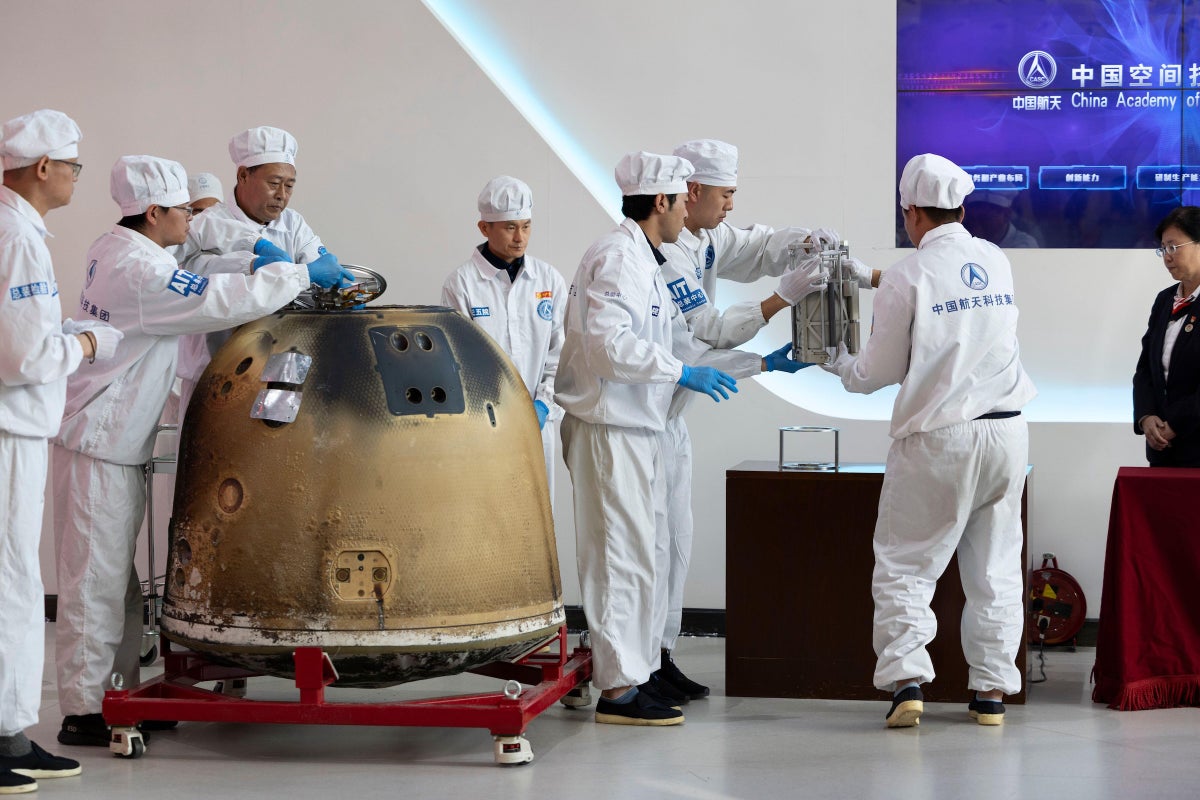
"Sifting through the first-ever rock samples collected from the far side of the Moon, scientists in China have unearthed a surprise: fragments of a rare type of meteorite that could help to piece together the Solar System's history. The debris scooped up by China's Chang'e-6 mission and returned to Earth in June last year resembles material from asteroids that carry dust pre-dating the Solar System."
"Most missions that have returned rocks from the Moon have sampled the surface facing Earth — the near side — which has fewer craters and has hosted greater volcanic activity. Chang'e-6, however, landed on the far side, at the Moon's largest, deepest crater — the South Pole–Aitken Basin, which accounts for about one-quarter of the Moon's surface area. One of the main objectives was to better understand why the far side looks so different from the near side."
Chang'e-6 returned the first rock samples from the Moon's far side and recovered rare olivine-bearing meteorite fragments. The fragments resemble material from asteroids that carry dust pre-dating the Solar System and could illuminate how asteroids delivered volatiles, including water, to planetary bodies. Chang'e-6 landed in the South Pole–Aitken Basin, a vast crater formed about four billion years ago and likely rich in impact debris. Primary objectives included understanding far-side differences from the near side and probing basin formation, while the discovery of asteroidal fragments provides unexpected insight into Solar System history.
Read at www.nature.com
Unable to calculate read time
Collection
[
|
...
]